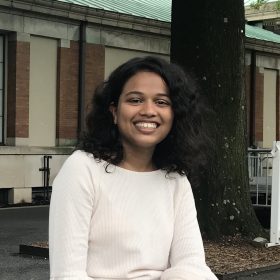JoVE in Action is a series of blog posts highlighting how STEM educators around the world have used JoVE to support their remote teaching efforts. We hope these stories will be useful for instructors looking for effective ways to deliver their science and lab courses online or in hybrid formats.

Dr. Kristian Schlick is an instructor in the Department of Chemistry & Biochemistry at Montana State University. When his institution moved to remote learning last spring, social distancing measures meant that the format of Dr. Schlick’s chemistry courses had to be adjusted. Students were only allowed to attend in-person labs to conduct an experiment once every three weeks. “The other 2 weeks needed exercises pertaining to a practical lab, and JoVE proved to be an excellent resource to showcase real scientists using real methods in a laboratory,” noted Dr. Schlick.
Dr. Schlick discovered JoVE resources through his institution’s subscription, and found it helpful that videos were short, well-organized and dedicated to different branches of chemistry. He used them to support virtual labs in his Introduction to Organic Chemistry and Biochemistry course, as well as an upper-level Biochemistry course. “Primarily, I was hoping to encourage students to understand the function and applications of common laboratory equipment,” he said. He aimed to provide students with enough background information that they would be able to operate lab equipment once they returned to hands-on labs.
To this end, Dr. Schlick assigned JoVE videos illustrating key research techniques and the use of common instrumentation. Teaching assistants for his introductory course created short worksheets and quizzes to supplement the videos, and to assess students’ understanding and application of the material. “JoVE is a great resource for students to see scientists in action, including demonstrations of instrumentation and proper technique,” said Dr. Schlick. “I really like the related videos that most pages have, both as a way to reinforce related methods and as a way to get lost in an interesting rabbit hole of knowledge.”
In his higher-level courses, students wrote short reports based on the observations and results presented in JoVE videos. For this, Dr. Schlick points out, JoVE Lab Manual videos were particularly helpful. Each lab manual is composed of three separate videos highlighting lab preparation for instructors, the protocol for students to follow, and the concepts underlying it. This allowed students to visualize the different components of a lab report, and the progression of an experiment. The videos also present concrete results, which students were able to comment on in their lab reports.
Dr. Schlick notes that JoVE can also be used to support in-person labs, and has used JoVE videos in his upper-level Organic Chemistry course to help students better prepare for hands-on lab activities. “With the instructor prep area, these [JoVE Lab Manual videos] seem to be easily adaptable for in-person labs,” he says. “These make for great pre-lab assignments so that students are better prepared and know what to expect, which means students will also be more safe. It also offers a great way to introduce real-life applications of methods that would at times be too expensive or impractical in a teaching lab, which generally has very limited time available.”
While using JoVE resources to supplement his remote labs, Dr. Schlick also found that students were not used to commenting on data they didn’t obtain themselves. His advice to other instructors using a similar model of instruction, therefore, is to remind students that scientific observations can be reported on even if they did not conduct the experiment.
“Science is a highly collaborative field, where data and results obtained from one researcher can be analyzed and interpreted by many others,” he says. “When in-person data collection is not possible, it is important to emphasize critical thinking and scientific communication.”





